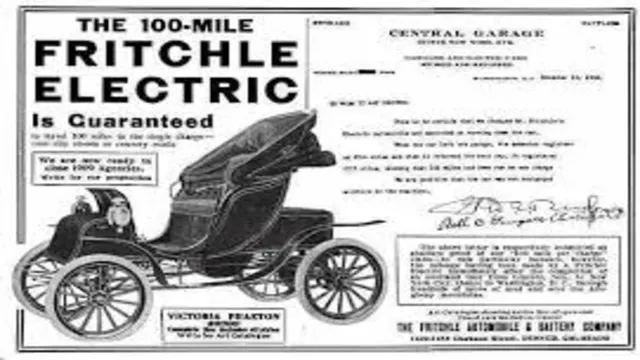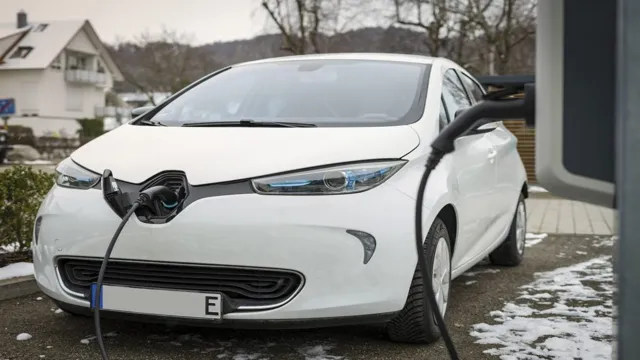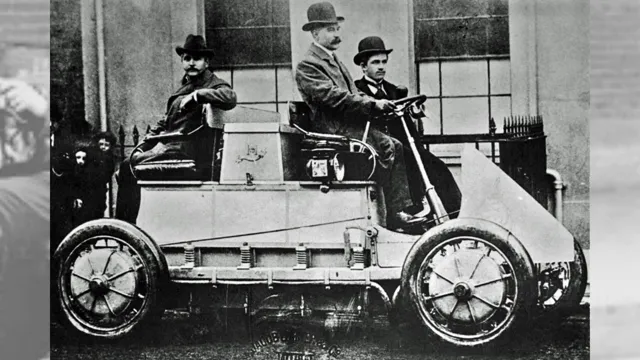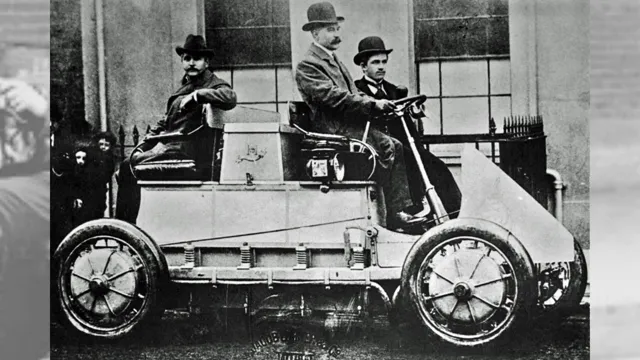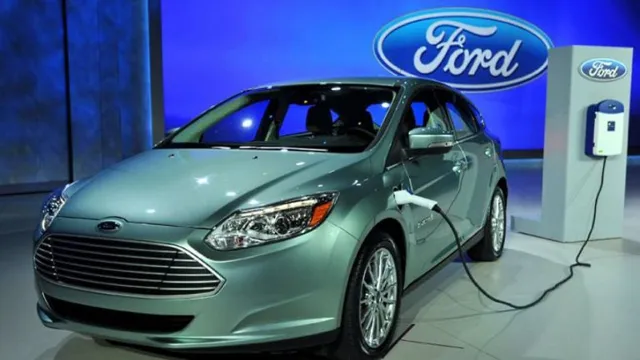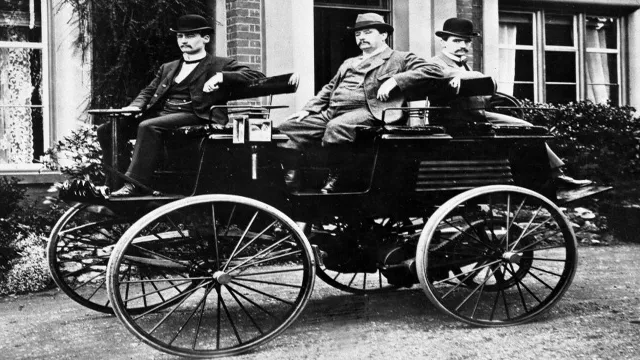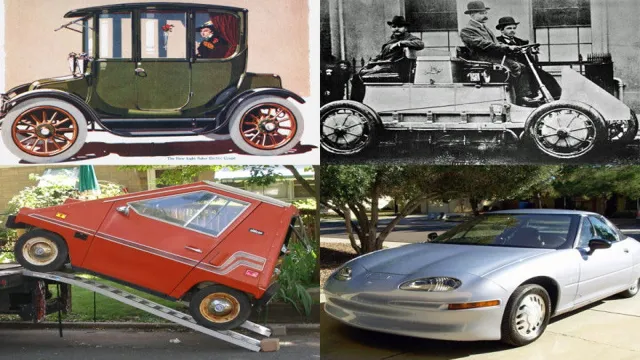Revolutionizing the Roads: An Insightful Look into the History of Electric Cars in Energy.gov
Electric cars have become increasingly popular in recent years, with consumers looking for more environmentally conscious transportation options. But did you know that electric cars have actually been around since the 1800s? That’s right – the history of electric cars spans centuries and has seen many innovations and setbacks along the way. In this blog, we’ll dive into the rich history of electric cars and explore how they have evolved into the modern vehicles we know today.
From early prototypes to the latest models, we’ll take a deep dive into the exciting world of electric cars and see how they are changing the way we think about transportation. So buckle up and get ready to explore the fascinating history of electric cars with Energy Gov!
Early Days of Electric Cars
The history of the electric car dates back to the early days of automobile development. In fact, the first electric car was designed in the 1830s, almost a century before the first gasoline-powered car was invented. With the discovery of electricity and advancements in battery technology, electric cars became viable transportation options by the late 1800s.
At the turn of the 20th century, electric cars were popular among the wealthy, who appreciated their quiet and smooth rides. However, the invention of the assembly line and improvements in gasoline engines led to the decline of electric cars. In the 1970s, the energy crisis and environmental concerns brought renewed interest in electric cars, with several automakers developing prototypes.
It wasn’t until the 1990s and early 2000s that consumer electric cars began to hit the market. Today, electric cars are seen as a practical and environmentally-friendly alternative to traditional gas-powered cars. With advancements in technology and infrastructure, the future of electric cars looks bright.
The U.S. Department of Energy offers a free online resource called the “History of the Electric car” on the energy.
gov website, providing detailed information for those interested in learning more about the development and evolution of electric cars over time.
1880s-1920s: Rise and Fall of Electric Cars
In the late 19th and early 20th centuries, electric cars were gaining ground as a popular mode of transportation. These early cars were often compared favorably to their gasoline-powered counterparts because they were quieter, easier to operate, and required less maintenance. However, the high cost of batteries and the limited range of electric vehicles limited their practicality for most people.
Despite these challenges, several automakers, including Thomas Edison and Henry Ford, saw potential in electric cars and continued to experiment with new designs and technologies. However, by the 1920s, improvements in gasoline engines and the emergence of cheaper oil made electric vehicles less competitive, and they ultimately fell out of favor as a viable option for most drivers. Nonetheless, the early days of electric cars represent an important era in the history of automotive innovation and highlight the ongoing efforts to find more sustainable modes of transportation.
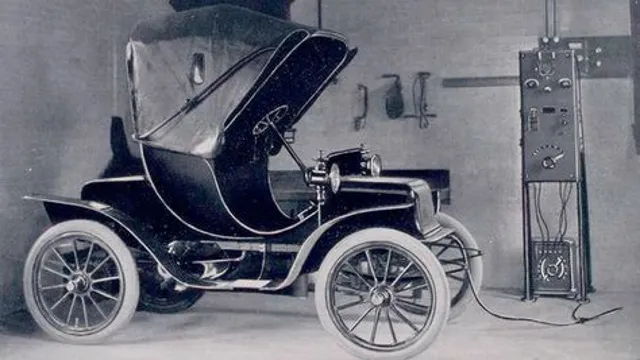
Electric Cars Make a Comeback
The history of electric cars goes way back to the 19th century when inventors were developing various types of electric vehicles. Nevertheless, it wasn’t until the 1990s and early 2000s when electric cars make a comeback, the Golden Age of this revolutionary technology. Thanks to the efforts of companies such as Tesla and Nissan, electric cars have once again become an exciting prospect, and more and more people are opting for them.
In the past, electric cars struggled to catch on due to their limited range and high cost, but modern electric vehicles are more powerful and have a much longer driving range. These vehicles are eco-friendly, and as more charging stations become available around the country, it won’t be long before we see electric cars take over the road. The history of electric cars shows that this technology has come a long way and with continued advancements in batteries and charging infrastructure, there is an excellent chance that electric cars will become the dominant mode of transportation in the not so distant future.
1970s-80s: Environmental Concerns and Oil Crisis
As environmental concerns increased and the world faced an oil crisis in the 1970s-80s, the need for alternative forms of transportation became apparent. Electric cars, which had been popular in the early 20th century, made a comeback. These cars had the advantage of being emission-free and much cheaper to run than gasoline-powered vehicles.
The first electric cars of this era, however, were slow and had limited range, making them impractical for long journeys. Despite their limitations, electric cars were seen as a promising alternative to gasoline-powered cars and manufacturers began investing in research and development to improve their batteries and range. It’s exciting to see how far we’ve come since then, with electric cars now being able to travel hundreds of miles on a single charge and becoming more affordable for the average consumer.
Who knew that the electric cars of the 1970s-80s would pave the way for the electric cars of today?
1990s-2000s: Advancements in Technology and Government Support
In the 1990s-2000s, technology and government support brought electric cars back into the mainstream. With concerns over climate change and air pollution, there was a renewed interest in finding eco-friendly alternatives for personal transportation. In response, automakers developed electric cars that were more accessible and reliable than their predecessors.
The government also provided incentives for consumers and manufacturers to invest in electric cars, such as tax credits and grants. Some cities even created special lanes and charging stations for electric vehicles. As a result, electric cars began to make a comeback, attracting both environmentalists and tech enthusiasts.
Today, electric cars are a common sight on the roads, and their popularity only continues to grow. With advancements in battery technology and infrastructure, electric cars are poised to become an even more viable alternative to traditional gasoline-powered cars in the coming years. So if you’re looking for a way to reduce your carbon footprint, maybe it’s time to consider going electric.
Challenges and Future of Electric Cars
The history of the electric car is littered with challenges and pitfalls. Despite being one of the first automobiles to be invented, it wasn’t until the 1990s that electric cars gained any real traction. However, with advancements in technology and increased awareness of the negative effects of fossil fuels, electric cars are now becoming more popular.
Experts believe that electric cars are the future of transportation, as they are more environmentally friendly and cost-effective in the long run. However, there are still challenges that need to be addressed, such as the high cost of batteries and charging infrastructure. If these challenges can be overcome, electric cars will undoubtedly become the norm in the coming years, paving the way for a cleaner, greener future.
Battery Technology and Range Anxiety
Battery technology has been one of the biggest obstacles to overcome in the quest for widespread adoption of electric vehicles. The limited range of electric cars has been a primary concern for potential buyers, leading to what is commonly known as “range anxiety.” However, with advancements in battery technology, the range of electric vehicles is steadily improving, and many of the latest models can travel upwards of 200 miles on a single charge.
That being said, battery technology still has a long way to go in terms of energy density, charging time, and overall cost. As a result, car manufacturers are constantly investing in research and development to improve battery technology and make electric vehicles more practical and affordable for the average consumer. While range anxiety may still be a concern for some, the future of electric cars looks promising, and as battery technology continues to evolve, it may become a non-issue sooner than we think.
Infrastructure and Charging Stations
Electric cars are becoming increasingly popular, but their adoption is not without challenges. Infrastructure and the availability of charging stations remain a significant hurdle. While in major cities, the installation of charging stations is making progress, rural areas are struggling to catch up.
Additionally, even in highly populated areas, the coverage of charging stations is patchy, and finding an available station can be a challenge. Another issue with charging is the speed of charging. Most charging stations take several hours to charge an electric car, which can be frustrating for drivers in a hurry.
There are new developments to decrease charging times, such as high-powered charging stations and battery-swapping technology. However, these improvements require significant investment, which may be a challenge for companies that provide charging infrastructure. Despite these challenges, the future of electric cars looks bright.
As technology continues to improve, we can expect further development of charging stations, making them more accessible and faster. Hopefully, as these efforts gain momentum, we will eventually see electric vehicles surpassing gasoline cars in terms of convenience and affordability.
Government Policies and Incentives
When it comes to the challenges and future of electric cars, government policies and incentives play a crucial role. One of the biggest challenges facing the electric car industry is the lack of infrastructure, such as charging stations, which can make it difficult for owners to travel long distances. However, governments around the world are taking steps to address this issue by investing in charging infrastructure and offering incentives for electric car ownership, such as tax credits and rebates.
Additionally, some cities are beginning to offer free charging for electric cars as a way to encourage adoption. Another challenge facing electric cars is the perception of limited range or battery life. However, advances in battery technology and increased awareness of electric cars are helping to change this perception.
With more and more people recognizing the benefits of electric cars – including lower fuel costs and reduced emissions – the future of the electric car industry looks bright. In fact, some experts predict that electric cars will eventually become the norm, replacing traditional gas-powered cars. In conclusion, while there are certainly challenges facing the electric car industry, government policies and incentives are helping to pave the way for a cleaner and more sustainable future.
As electric cars become more mainstream and infrastructure continues to improve, we can expect to see more and more people making the switch to electric. It’s an exciting time for the industry, and the future looks bright!
Electric Cars and the Environment
Electric cars have gained significant popularity over the last few years, and for good reason. They are eco-friendly and can help reduce carbon emissions. While these cars hold a lot of promise, they also face a few challenges.
One major concern is the limited range of electric cars compared to traditional cars. This means that drivers need to plan their trips more carefully and make sure they have a charging station available should they run out of power. To address this challenge, major car manufacturers are working on developing more efficient batteries that can hold a charge for longer.
Another challenge is the lack of infrastructure to support electric cars. There are simply not enough charging stations available in most cities, making it tough for drivers to find ways to power their cars on longer trips. To address this issue, governments and private companies are working to create more charging stations across the world.
Despite these challenges, electric cars do hold a lot of promise for the future. As technology continues to improve, we can expect to see more efficient and affordable electric vehicles that will help us reduce our carbon footprint and build a cleaner, more sustainable future for everyone.
Conclusion: What’s Next for Electric Cars
As the energy landscape shifts towards sustainability, the electric car has emerged as a key player in the race to reduce emissions and improve air quality. From humble beginnings to the modern marvels we see on the streets today, the history of the electric car is one of innovation, perseverance, and unwavering commitment to a cleaner future. And as we move forward, guided by the foresight of the Energy.
gov, electric vehicles will continue to electrify the roads and energize our communities towards a brighter, more sustainable tomorrow. It truly is an electrifying time to be alive!”
FAQs
What is the history of the electric car?
The history of the electric car dates back to the 1800s when electric cars were first introduced as a mode of transportation. However, their popularity declined due to limitations in battery technology and the emergence of gasoline-powered vehicles. In recent years, electric cars have gained popularity again due to advancements in battery technology and the push towards sustainable energy.
How does an electric car work?
Electric cars are powered by an electric motor and a battery pack. When the car is driven, the battery powers the electric motor which turns the wheels. The battery is recharged by plugging it into an electric charging station.
What are the advantages of using electric cars?
Electric cars have several advantages over gasoline-powered vehicles. They produce zero emissions which makes them environmentally-friendly. They are also cheaper to operate as they require less maintenance and electricity is generally cheaper than gasoline. Additionally, they provide a smoother and quieter driving experience.
What is the government doing to promote the use of electric cars?
The government has implemented several policies to encourage the use of electric cars, such as tax incentives and grants for the purchase of electric cars and the installation of charging stations. There are also regulations being put in place to reduce emissions and promote sustainable transportation.

